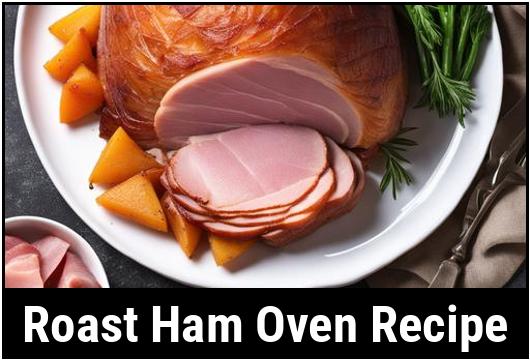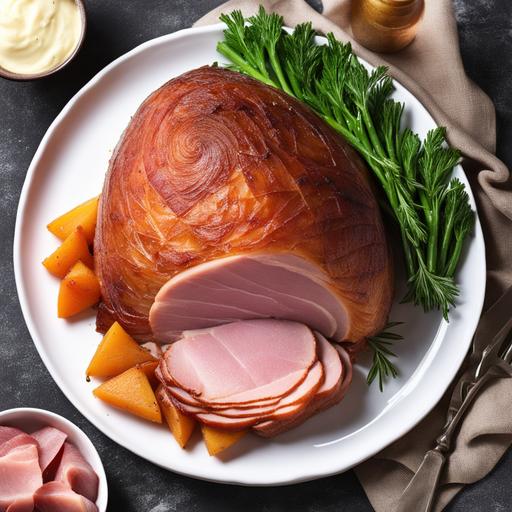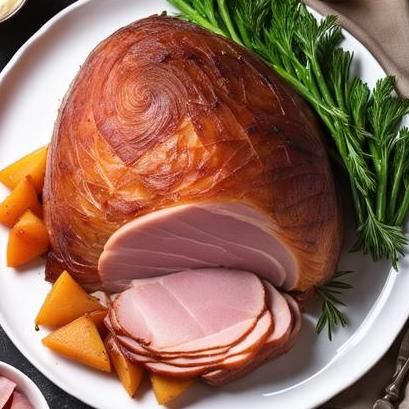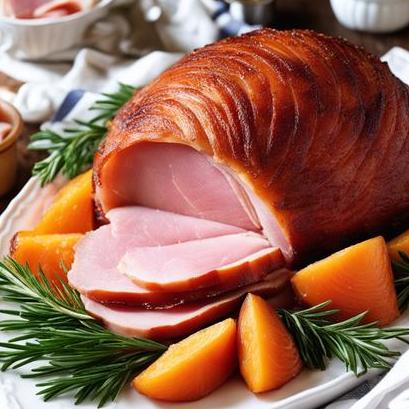
The Perfect Roast Ham Oven Recipe: Achieving Flawless Succulence And Flavor
Welcome to this comprehensive guide on preparing the most succulent and flavorful roast ham in your oven. In this article, we will delve into the culinary details, selection, cleaning, preparation, cooking tips, variations, doneness checks, and more. Get ready to embark on a culinary adventure that will leave your taste buds tantalized and your guests impressed!
Selecting the Perfect Ham
Choosing the right ham for your roast is crucial. Opt for a bone-in, fully cooked ham for optimal flavor and ease of preparation. Look for hams with a good layer of fat and uniform color, avoiding any discoloration or visible signs of spoilage. Ensure the ham is not too salty, as overly salty hams can affect the overall taste of your dish.
Cleaning and Preparing the Ham
Before cooking, it’s essential to prepare the ham properly. Start by rinsing the ham under cold water to remove any excess salt or other impurities. Pat it dry with a paper towel and set it on a clean cutting board.
Preparing the Glaze

A delicious glaze is the key to enhancing the flavor of your roast ham. While there are various glaze options available, we recommend a classic combination of honey, Dijon mustard, brown sugar, and a touch of cloves for a delightful balance of sweetness and tanginess.
To prepare the glaze, combine 1/2 cup of honey, 2 tablespoons of Dijon mustard, 1/4 cup of brown sugar, and a pinch of ground cloves in a bowl. Mix well until all the ingredients are fully incorporated.
Applying the Glaze
Before applying the glaze, score the ham by making shallow diagonal cuts across its surface. This allows the glaze to penetrate the meat, ensuring every bite is bursting with flavor.
Generously brush the glaze all over the ham, making sure to coat the scored areas thoroughly. The glaze will caramelize during cooking, creating a beautiful golden crust.
Cooking Time and Temperature

To achieve that perfect tenderness, it’s crucial to cook your roast ham at the right temperature and for the appropriate duration. Preheat your oven to 325°F (160°C). Place the ham on a rack in a roasting pan, ensuring the fat side is facing up.
Cooking Time Guidelines:
-
For a bone-in ham weighing 10-14 pounds, approximately 18-20 minutes per pound.
-
For a bone-in ham weighing 14-18 pounds, approximately 16-18 minutes per pound.
Doneness Checks
To ensure your roast ham is cooked to perfection, use a meat thermometer. Insert the thermometer into the thickest part of the ham, avoiding contact with the bone. The internal temperature should reach 145°F (63°C) for a fully cooked ham.
Another technique to gauge doneness is to look for a nice golden-brown color on the outside of the ham. The glaze should have caramelized beautifully, and the entire kitchen should be filled with a mouthwatering aroma.
Resting the Ham

Once your roast ham reaches the desired temperature, it’s crucial to let it rest before serving. Remove it from the oven and tent it loosely with aluminum foil, allowing it to rest for at least 15-20 minutes. This resting period allows the juices to redistribute throughout the meat, resulting in maximum tenderness and flavor.
Carving and Serving
To carve your roast ham, use a sharp carving knife. Begin by cutting slices parallel to the bone, working your way down the ham. For boneless hams, slice across the grain for the most tender cuts.
Arrange the beautifully carved slices on a serving platter, and don’t forget to drizzle any remaining glaze over the top. Your roast ham is now ready to be served!
Tips and Variations

-
For an extra burst of flavor, consider adding spices such as cinnamon, garlic, or paprika to your glaze.
-
If you prefer a sweeter glaze, try incorporating maple syrup or pineapple juice.
-
For a smoky twist, consider using a BBQ glaze instead of a sweet glaze.
-
If you enjoy a crispy exterior, increase the oven temperature to 400°F (200°C) for the last 15 minutes of cooking.
-
Leftover ham can be utilized in various recipes, such as sandwiches, soups, or omelets. Get creative and experiment with different flavors!
Overcooking or Undercooking
While this recipe provides general cooking guidelines, each oven is different, and variations in ham size can affect cooking times. Overcooking your ham can cause it to become dry, while undercooking may result in an unsafe consumption. Therefore, always rely on doneness checks, such as internal temperature and appearance, to ensure perfect results. Adjust cooking times accordingly based on your specific oven and ham size.
Conclusion
Preparing a roast ham in your oven is an extraordinary culinary adventure that promises succulence, flavor, and undeniable indulgence. With the right selection, cleaning, glazing, and cooking techniques, you can achieve a roast ham that will leave your guests in awe of your culinary skills. Remember to experiment with flavors and enjoy the process, as cooking is not just about the end result, but the journey itself. Happy roasting and bon appétit!
Sources
FAQS On Roast Ham Oven Recipe
What Temperature Should I Set My Oven To When Cooking A Roast Ham?
To achieve the perfect roast ham, preheat your oven to 325°F (163°C). This low and slow cooking temperature ensures even heat distribution and allows the ham to cook gently, resulting in a tender and succulent texture.
How Long Should I Cook A Roast Ham In The Oven?
The cooking time for roast ham depends on its weight. As a general guideline, for each pound (0.45 kg) of ham, you should cook it for about 18-20 minutes. Therefore, if you have a 7-pound (3.18 kg) ham, it will take approximately 2 hours and 6 minutes to 2 hours and 20 minutes to cook thoroughly. However, it is crucial to use a reliable meat thermometer to check for internal temperature to ensure doneness.
How Do I Enhance The Flavor Of My Roast Ham?
To enhance the flavor of your roast ham, consider creating a glaze or using a rub. The glaze can be made with a combination of ingredients such as brown sugar, mustard, honey, or a variety of spices. Apply the glaze onto the ham during the last 30-60 minutes of cooking time, brushing it on every 15 minutes for a glossy, caramelized finish. Alternatively, a dry rub made with spices like brown sugar, paprika, garlic powder, and black pepper can be applied before placing the ham in the oven to provide a delicious crust and infuse the meat with flavor.
How Can I Ensure My Roast Ham Stays Moist During Cooking?
To ensure that your roast ham stays moist throughout the cooking process, you can baste it periodically. Basting involves using a spoon or a baster to scoop up the natural juices or glaze from the bottom of the pan and drizzling it over the ham. This process helps to keep the meat juicy and adds extra flavor. Additionally, sealing the ham tightly with aluminum foil while it cooks will help retain moisture as well.
Should I Let The Roast Ham Rest Before Carving?
Yes, it is crucial to let the roast ham rest before carving it. Allow the ham to rest for about 15-20 minutes after removing it from the oven. This resting period allows the juices to redistribute within the meat, resulting in a more tender and flavorful end product. Furthermore, the ham will be easier to carve when rested as it will be firmer and hold its shape better when sliced.



